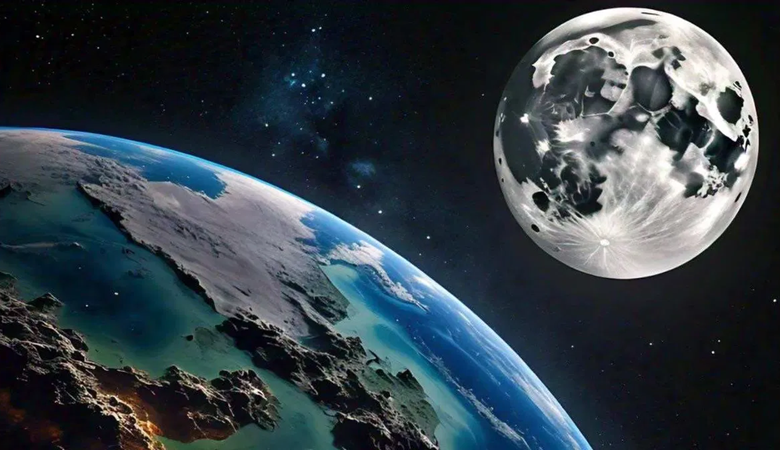How the Moon Drifting Away Could Extend Earth’s Day to 25 Hours

News Mania Desk/Agnibeena Ghosh/4th August 2024
Scientists have recently uncovered a fascinating aspect of our planet’s future: Earth’s day could eventually stretch to 25 hours due to the Moon’s gradual drift away from us. This intriguing prediction stems from research conducted by the University of Wisconsin-Madison, which reveals that the Moon is moving away from Earth at a rate of approximately 3.8 centimeters annually.
This seemingly slow drift, while modest on a yearly scale, could have significant long-term effects. According to the study, in about 200 million years, the length of a day on Earth might increase to 25 hours. This is a notable change from around 1.4 billion years ago, when a day on Earth was just over 18 hours long.
The primary driver of this phenomenon is the gravitational interaction between Earth and the Moon. Stephen Meyers, a geoscience professor at the University of Wisconsin-Madison, likens this interaction to a spinning figure skater who slows down as they extend their arms. The Moon’s gravitational pull affects Earth’s rotation, and as it moves further away, Earth’s rotation gradually slows down.
Meyers and his team have been utilizing a method called ‘astrochronology’ to study ancient geological records. This approach allows scientists to understand how Earth’s rotation and the length of a day have changed over billions of years. By analyzing ancient rocks and sediment layers, researchers aim to draw parallels between past geological processes and present-day phenomena.
Although the concept of the Moon receding from Earth has been known for some time, this new research delves deeper into the historical and geological context of the process. The study provides valuable insights into the Moon’s influence on Earth’s rotation throughout geological history.
The research highlights that while the Moon’s rate of recession has been relatively stable, it has experienced fluctuations due to various factors. Earth’s rotational speed and continental drift are significant contributors to these variations. By examining ancient geological formations, scientists can track the Moon’s movements and understand how they have impacted Earth over geological timescales.
This new understanding of the Earth-Moon system not only offers a glimpse into the distant future but also enriches our knowledge of Earth’s geological past. As the Moon continues to drift away, the gradual lengthening of a day underscores the intricate and dynamic relationship between our planet and its natural satellite.






